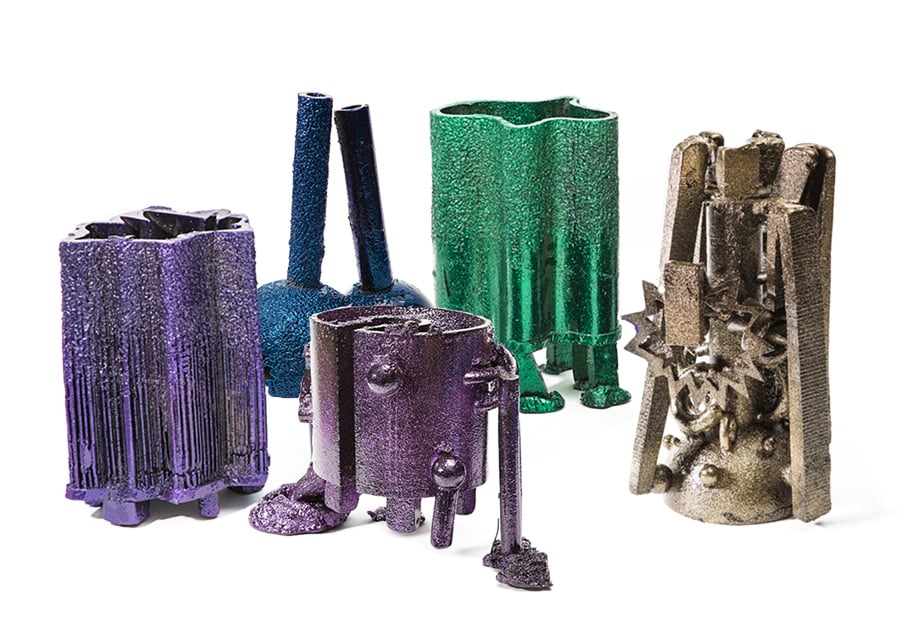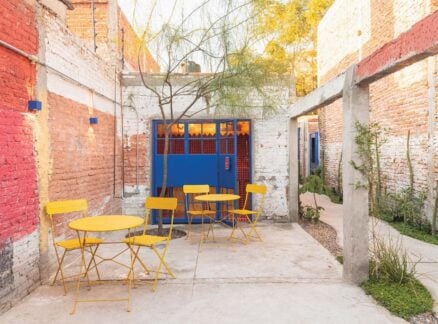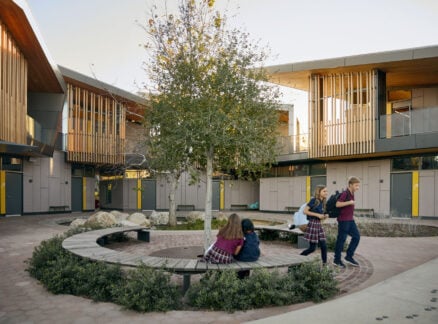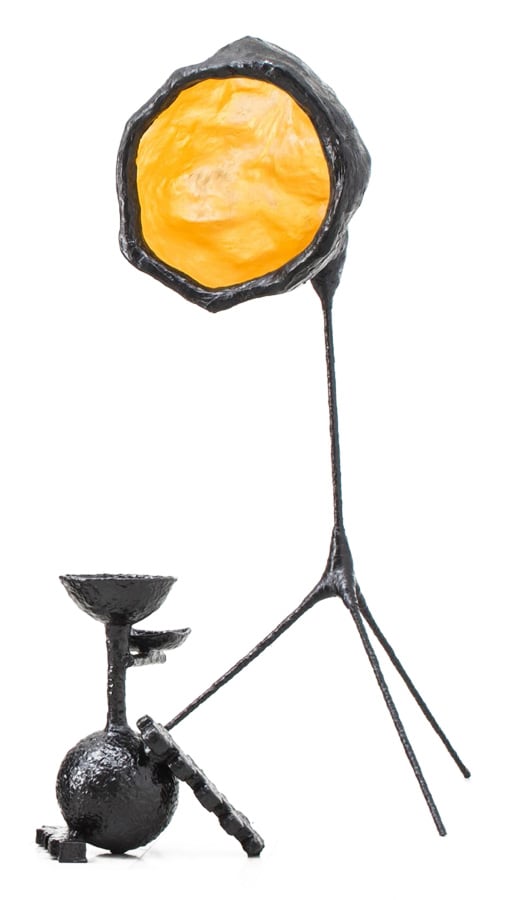
April 18, 2019
Designer Brecht Wright Gander’s Work Is Both Elusive and Exploratory
Gander’s practice is twofold, straddling conceptual and industrial design: He develops restrained commercial editions under a moniker and imaginative sculptural work under his own name.
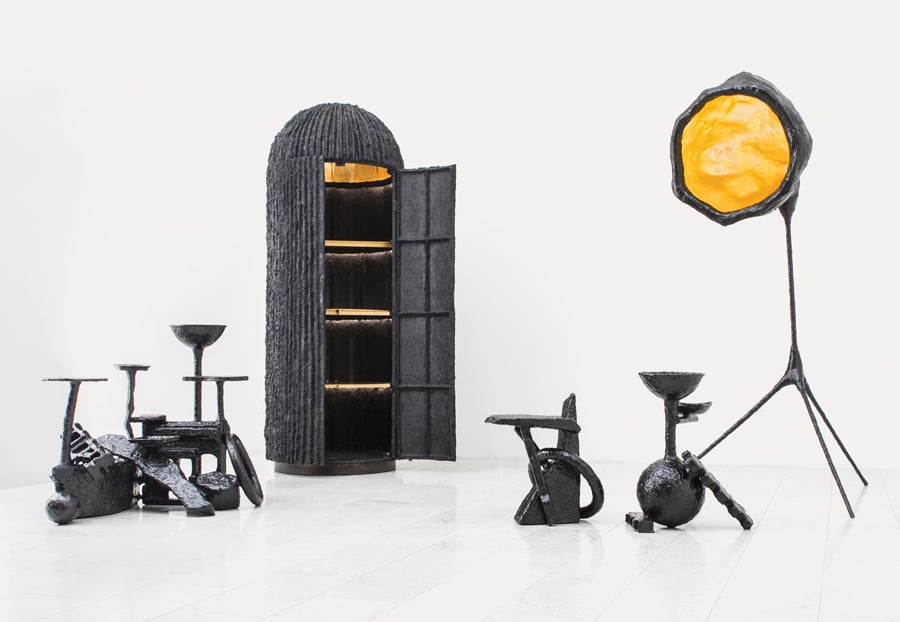
Only two years into his formal commercial practice, Brecht Wright Gander is a newcomer to the American design scene. But the 32-year-old visionary has already amassed a body of work that reflects his skill across a range of stylistic idioms. Gander’s practice is twofold, straddling conceptual and industrial design: Under the moniker Birnam Wood Studio, he develops commercial editions characterized by their restraint and combination of craftsman’s precision and love of Modern design; under his own name, he produces imaginative sculptural work for the collectible market. Gander himself says he’s “torn by two tendencies: to believe that design is everything and that it is nothing but a joke.” But what unifies the designer’s work across the spectrum is an abiding fascination with materials and process.
Gander launched his first collection of minimalist domestic designs as Birnam Wood Studio at ICFF in 2017. Inspired by the rationalist principles of classic “good” design, the simple, efficient objects were engineered to maximize functionality while minimizing hardware, assembly, and weight. The Stainless Swoop Mirror (shown in the slideshow at the bottom of the article) from the line cleverly combines mirror, shelf, and vase into one self-leveling, single-screw-assembly design, while the Total Garbage side table comprises a cantilevered surface supported by a weighted planter—two modular components enabling each other’s function. Though Gander is trained as a fine woodworker, his commercial editions embrace industrial materials and techniques—artificial stone, mirror-polished steel, thermoforming, and powder coating. He relishes the challenge of finding cost-efficient and durable materials suitable for mass-produced objects that meet certain functional mandates.

Yearning to develop a more expressive practice, Gander launched his eponymous studio in 2018, releasing a collection with New York gallery Todd Merrill Studio that same year. These forms are labor-intensive one-offs, often prohibitively heavy or precariously fragile, with elusive functions. By his own admission, they’re intentionally “terrible designs,” forgoing practicality in order to explore “the spectrum of beauty which Modernism sometimes seems to be trying to unsee.” Playing with disquieting proportions and textural tensions, his overscaled Yo! Burri lamps and imposing True Jelly of the Beast cabinet are crudely fashioned from papier-mâché, but feature luxurious gold-leaf detailing and carefully concealed LED lights.
In his studio works, Gander seeks out materials that allow him to go from impulse to final result with few intermediate steps. These resins, paper pulps, and single-use molds reveal the artist’s hand, addressing the “longing for haptic connection” Gander feels is a by-product of digital culture.
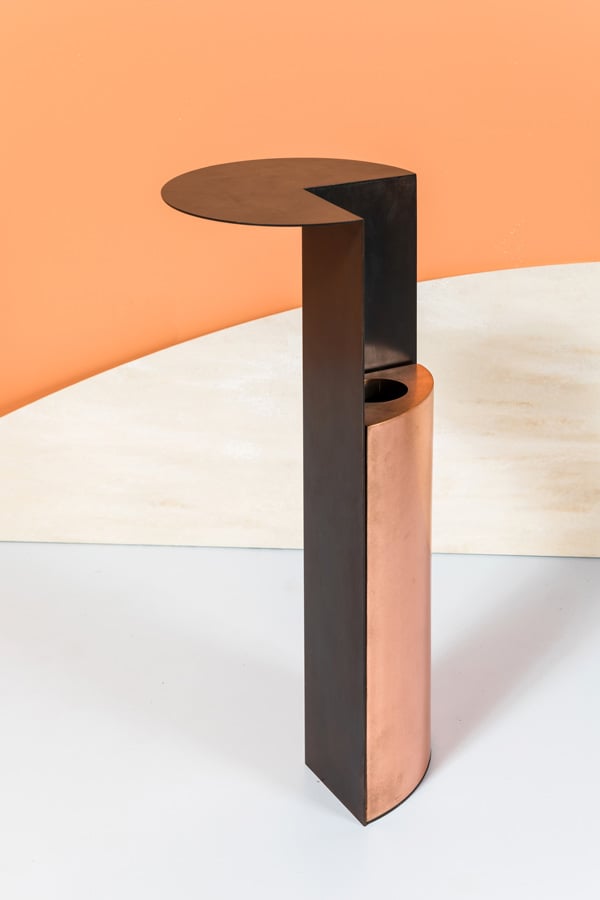
Maintaining both a conceptual studio practice and a commercial line keeps the designer busy; indeed, 2019 is already booked with commissions, orders, and a rigorous show schedule. To accommodate all this work, Gander recently moved his studio to rural New Jersey, where he has more space to experiment with materials for new projects, including lightweight glass fiber– reinforced concrete and color-shifting pigments. Toggling between the fantastical and the functional also helps balance Gander’s design sensibilities. “I want a certain level of seriousness with my play, to know that it’s connected to an inquiry that has a weighted intention behind it,” he says. “When it’s playful but also having to hit these measures of functionality, that’s the kind of place that I find the most delightful.”
You may also enjoy “Google Used Sensors to Connect Neurology and Aesthetics at Milan Design Week.”
Would you like to comment on this article? Send your thoughts to: [email protected]



